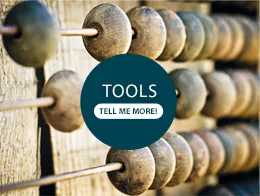When Bart Eddy arrived in Detroit in the 1980s, it wasn’t by plan or purpose. A product of the ’60s, after graduating from college he had reportedly embarked on an On The Road-style journey, influenced by hippie movement architect and famed vagabond Jack Kerouac. Something about the decaying of a once-vibrant and burly upper-Midwest city captivated him.
Eddy quickly went to work in various community-activism roles before eventually co-founding what is now Detroit Community Schools in 1997. The schools, a high school and middle school, are located in the Brightmoor neighborhood, an approximately four-square-mile swath of land on the northwest border of the city. Built largely for the workers of a burgeoning auto industry in the ’20s, Brightmoor has felt the effects of the Detroit bust as much or more than any neighborhood in Detroit and has since been dubbed, not-so-creatively, “Blightmoor.”
Until 2013, when the Detroit Blight Authority began an all-out restoration blitz on Brightmoor, the streets were crime-ridden and people fled, leaving dilapidated buildings and vacant lots in their wake. The population has dropped from about 23,000 at peak to fewer than 13,000 in the 2010 census.
‘CURBSIDE ECONOMICS AND ENTREPRENEURSHIP’
But don’t tell any of that to Eddy. The man shows no letup in pouring his life into a community trying to haul themselves up from near rock-bottom. Eddy has a mystical and calming sense about him. Conversing with him is like talking to your grandfather, Yoda, and your high school shop teacher all at once—there’s warmth, wisdom, and the fear that he’s going to tell you like it is, no matter what, and sometimes the truth does indeed hurt.
“We are lacking training in the arts and the practical, hands-on arts and crafts,” Eddy says when describing the motivation behind his newest project with students of his high school. “This used to be so much a part of community learning styles. There’s a hunger from our young people to become creative, active, engaged, and learn to do things with their hands.”
In 2009, Eddy began applying for and receiving grants from the city to hire his high school students—at an amount less than minimum wage—to do vacant-lot restoration and landscape design during the summer. In 2011, he established Brightmoor Woodworkers Association in an abandoned building, teaching the students “curbside economics and entrepreneurship.”
‘WE HAVE A REAL SERIES OF ENTERPRISES GOING HERE’
The first project involved building and selling handcrafted wooden signs in the neighborhood. In the fall of 2011, people started noticing the signs around the community and inquired how they could buy their own. So Eddy and the students figured out what they should charge and began selling them.
Then students started showing interest in bike maintenance and urban gardening. So Eddy created a garden and bike maintenance shop with them. He started calling it Youth Entrepreneurship in Action and operated “by the amount of work they can hustle” and the ideal of “if you have an idea, let’s find a way to put it into action.”
For the past two years directing the program, Eddy has been able to hire students to work in the woodworking shop, urban garden, and bicycle shop. “We have a real series of enterprises going here,” he explains. “Right now, we’re employing 40 kids. We’re doing the kind of education methodology that I like to describe as an elemental pathway to work. And we’re putting the youths’ experiences as apprentices and journeymen to master entrepreneurial training.”
FIRST-YEAR ROSS STUDENTS DEDICATE IMPACT CHALLENGE TO BRIGHTMOOR
The next step in the evolution is the Brightmoor Maker Space—a 3,200-square-foot abandoned building on the Detroit Community Schools campus being revitalized to encourage and enable Brightmoor residents to create and incubate ideas. The project originated from Eddy’s efforts, a partnership with the University of Michigan Stamps School of Art & Design, which received a two-year $100,000 matching grant from the John S. and James L. Knight Foundation, and a July crowdfunding campaign.
Since this past spring, the maker space has also received attention from Michigan’s Ross School of Business. The largest investment of time and resources so far from Ross students came during this year’s Impact Challenge, organized by the Sanger Leadership Center. Each year, incoming Ross students spend an orientation week working within Detroit on a business challenge. This time, teams worked with Brightmoor neighborhood residents and nearly 60 Brightmoor young people to develop products and business plans for the maker space and the Ross-hosted Detroit Youth Maker Faire in Detroit’s Eastern Market.
“The week is about showing our students how business can be a force for positive change in our communities, creating both economic and social value.” explains Scott DeRue, associate dean and director of the Sanger Leadership Center. “Brightmoor is a neighborhood in our community that is not experiencing the same positive momentum that other parts of Detroit are today.”

A Ross student and young people working with music production at the Detroit Youth Maker Faire. Photo courtesy of Michigan’s Ross School of Business
AN UNLIKELY CHALLENGE
However, momentum is growing around the Maker Space, DeRue says. Ross students were divided into six teams of 60 students each and were assigned to the creation and scaling of a product in 72 hours, alongside Brightmoor adults and youth, to sell at the Detroit Youth Maker Faire and pitch to a panel of judges from Deloitte and General Motors. The winning product received seed money to grow the business.
Working in the three categories of urban gardens and food, music production, and woodworking, the challenge was clear. It would be tough enough to create, scale, market, and sell a product in 72 hours. Not only were the students tasked with that, they had to do it with strangers—and some potential cultural divides, to boot. When Eddy first heard the idea to create and sell a product in 72 hours, he wasn’t convinced. “Why are you doing this? What’s the point?” Eddy recalls asking himself. “It’s kind of like one-and-done in a way. But, there’s something much, much richer in this. It’s about sitting together and thinking about a vision and then making that vision a reality.”
Eddy also points to the fact that outsiders coming into a community to “save it” often doesn’t go over well. In one instance, Eddy recalls, a social worker met with students at his school and spoke about helping the poor neighborhoods in the area. “The kids got up in an uproar about this,” Eddy remembers. “They don’t consider themselves poor and they certainly don’t want to hear the idea they’re underserved.
“You can’t have the mindset of, ‘Oh, this poor, underserved, minority is going to receive something from us.’ That’s a challenge right there. And the Ross students have not projected that kind of attitude or a mentality of sympathy. They’ve wanted to know in a genuine way what our students are interested in, what they think is saleable and makeable in the community.”
‘WHY WOULD WE USE A CUTTING BOARD, WE’VE GOT COUNTERS’
And the genuine interest led to many interesting products. The teams created kale chips and popcorn, urban garden planter boxes, cutting boards, and two songs, entitled Open Window and #BE.
The cutting boards, in particular provided a couple valuable lessons for both MBA students and Brightmoor youth, alike. “When they (Ross students) presented the personalized cutting boards to the Brightmoor students, they didn’t think much of it at all,” Eddy says. “They said, ‘Why would we use a cutting board? We’ve got counters.’
“Of course the other side of that is, a cutting board might be great for our kids to market and sell in metropolitan Detroit. And through that, we might be able to grow our market. So this is the type of learning experience and awareness that is beginning to take place.”



